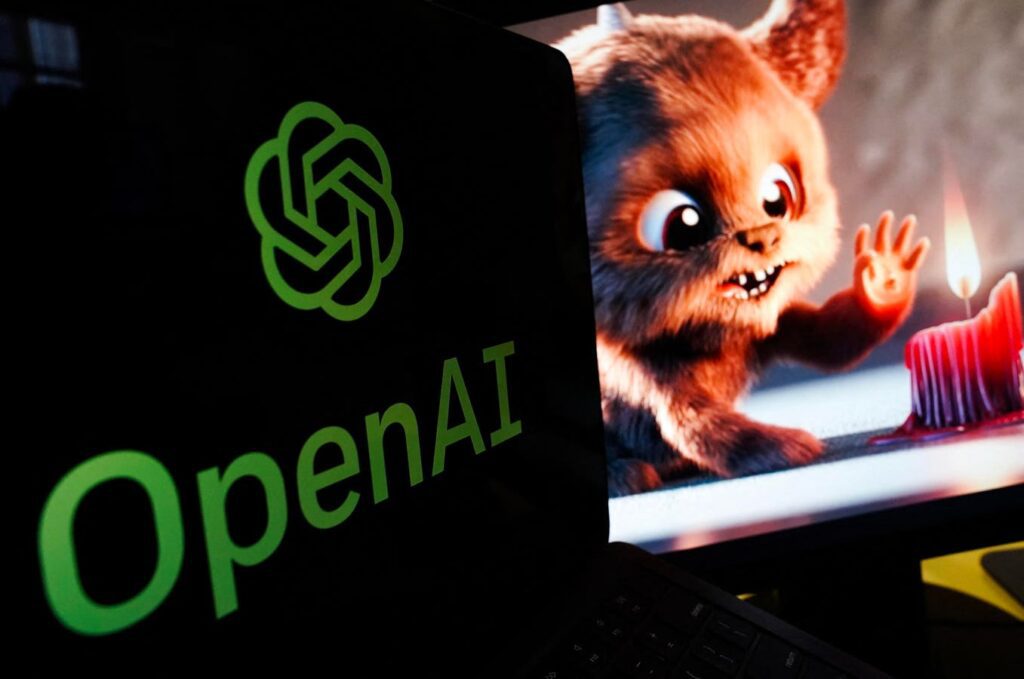In this photo illustration, a video created by OpenAI’s newly released text-to-video “Sora” tool … More
AFP via Getty Images
Unlocking Creativity: OpenAI’s Latest Innovations in Video and Image Generation
OpenAI is once again making waves in the tech world with its latest developments, particularly its 4o image generator that is fueling an AI-infused anime revolution. This exciting innovation begs the question: how will we create and perceive visual content in the future?
A Closer Look at OpenAI’s 4o Model
The arrival of the 4o image generator has sparked fresh conversations about the potential, limitations, and copyright implications of AI-assisted artwork creation. Unlike its predecessors, which were largely influenced by the artistic interpretations of Salvador Dalí, the 4o model directly tackles common professional challenges—especially in rendering text and maintaining consistency across images.
This picture taken on January 23, 2023 in Toulouse, southwestern France, highlights the logos of OpenAI and Dall-E. Dall-E is an AI image generator developed by OpenAI. (Photo by Lionel BONAVENTURE / AFP)
AFP via Getty Images
Understanding the Competitive Landscape
As the field of AI image generation expands, various platforms are emerging with unique specializations that reveal both advancements and challenges within generative AI. For example:
- Midjourney: Ideal for digital artists and concept creators, it offers diverse stylistic options but can sometimes lean into surrealism, making it less suitable for realistic portrayals.
- Google’s Gemini 2.5: Designed to integrate seamlessly with Google services, enhancing synergy across applications.
- Meta AI: Focused on social media, it harnesses extensive media knowledge to create memes and other shareable content.
- Grok AI: Provides iterative image generation through chat, making it a hub for collaborative creative sessions.
- Adobe Firefly: Gaining traction in corporate environments, it ensures legal compliance and integrates smoothly with Creative Cloud applications, addressing major concerns for businesses.
The Impact of AI Image Generators
The innovative 4o model embraces a recent leap in autoregressive models, which process both images and instructions as sequences. This enhances the coherent generation of images containing multiple elements. Some key strengths include:
- Text Rendering: The 4o model has made strides in crafting legible text within images—a common issue in previous AI models, now making it feasible for marketers to create compelling mockups with accurate branding.
- Contextual Consistency: Improved performance in generating multiple related images means less time spent revising by designers and animators.
- Prompt Adherence: This model exhibits reduced tendencies for creative reinterpretation, making it more reliable for professional contexts.
Across various industries, AI image generation is transforming the way companies deliver visual content. For instance, platforms like Dashoon are enabling storytellers to create around 50,000 images a day, speeding up creative workflows. Similarly, Ayna’s collaboration with Azure OpenAI has allowed brands to quickly generate virtual try-ons and product photo shoots, making it more efficient than traditional studio setups.
Tackling Limitations
Despite the advancements, challenges remain. AI creations often present human faces, animal fur, and textures in an almost hyper-realistic yet uncanny manner that can make them feel unnatural. The recent launch of AI-generated advertisements, like Coca-Cola’s holiday campaign, raises debates about authenticity in marketing. Are audiences connecting with these digitally created images?
The Creativity Paradox
As AI tools become a conduit for democratizing image creation, they simultaneously risk undervaluing traditional artistry. Roles in design and advertising face potential declines due to automation, as noted in the World Economic Forum’s Future of Jobs Report 2025. However, roles supporting generative AI—such as machine learning specialists and digital engineers—are on the rise. This shift emphasizes the need for creative professionals to adapt and merge human insights with AI capabilities.
Interestingly, while technology seems poised to revolutionize creative fields, history shows it reshapes rather than replaces artistic professions. Just as photography didn’t eliminate painting but transformed its role, AI may redirect human creativity toward areas where it thrives, such as emotional depth and cultural storytelling.
Looking Ahead
The journey of AI image generation suggests neither a complete overhaul of creative processes nor a looming threat, but a vital reconfiguration of how we communicate visually. Success for professional users typically hinges on:
- Implementing clear guidelines for appropriate use of AI-generated content.
- Ensuring human oversight for key outputs, especially in sensitive areas.
- Creating hybrid workflows that optimize AI efficiency without abandoning human insight.
- Regularly assessing both measurable outcomes and qualitative effects.
As these technologies mature, their true value will not merely stem from their technical prowess but from how organizations skillfully weave them into creative and operational frameworks. The most effective users will recognize AI tools—like the 4o image generator—not as substitutes for human creativity, but as valuable partners that assist with specific tasks while preserving the irreplaceable human touch.
In an ever-expanding world of synthetic visuals, the question remains: can AI creations resonate authentically with human experiences?
The AI Buzz Hub team is excited to see where these breakthroughs take us. Want to stay in the loop on all things AI? Subscribe to our newsletter or share this article with your fellow enthusiasts.




